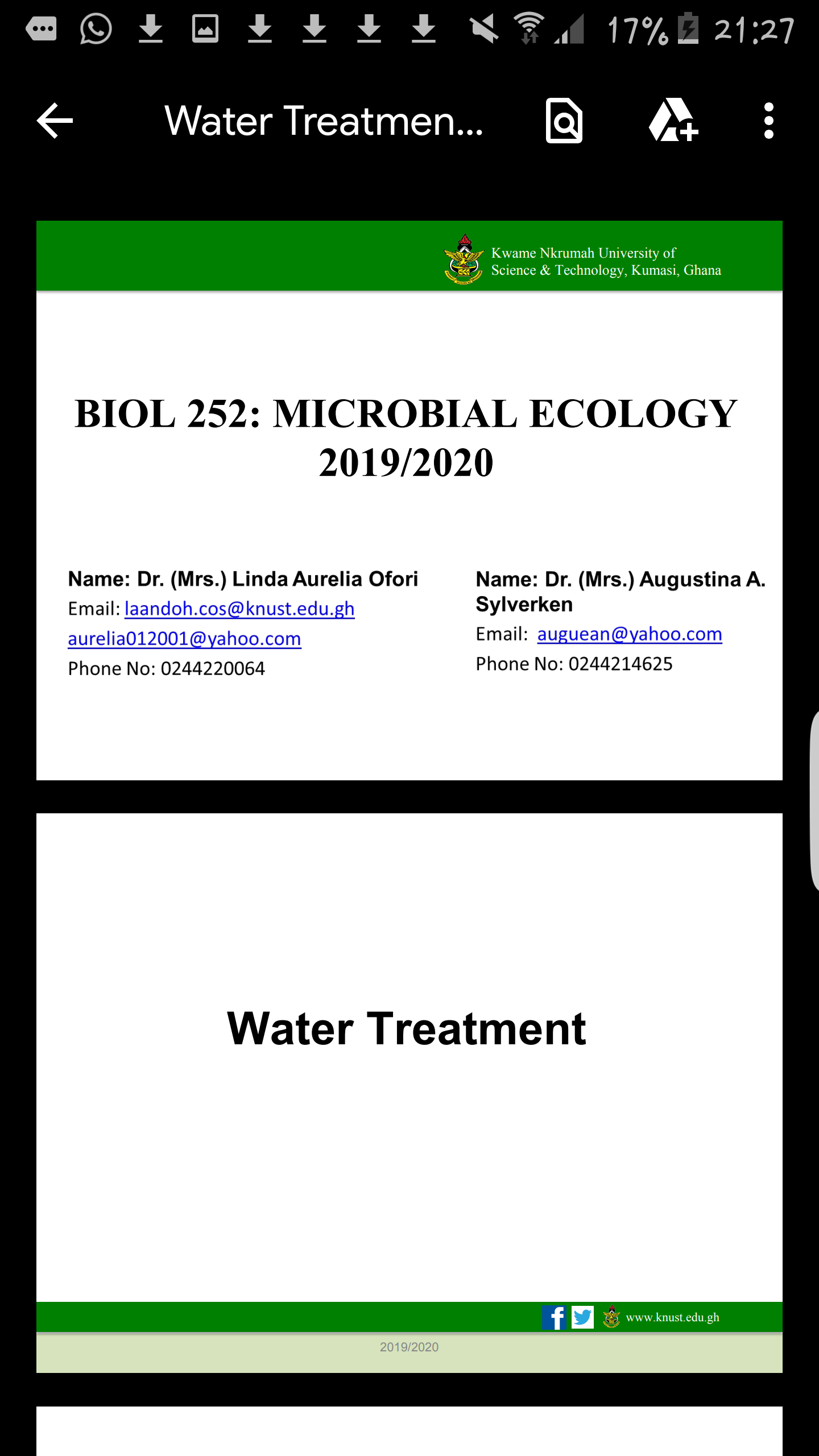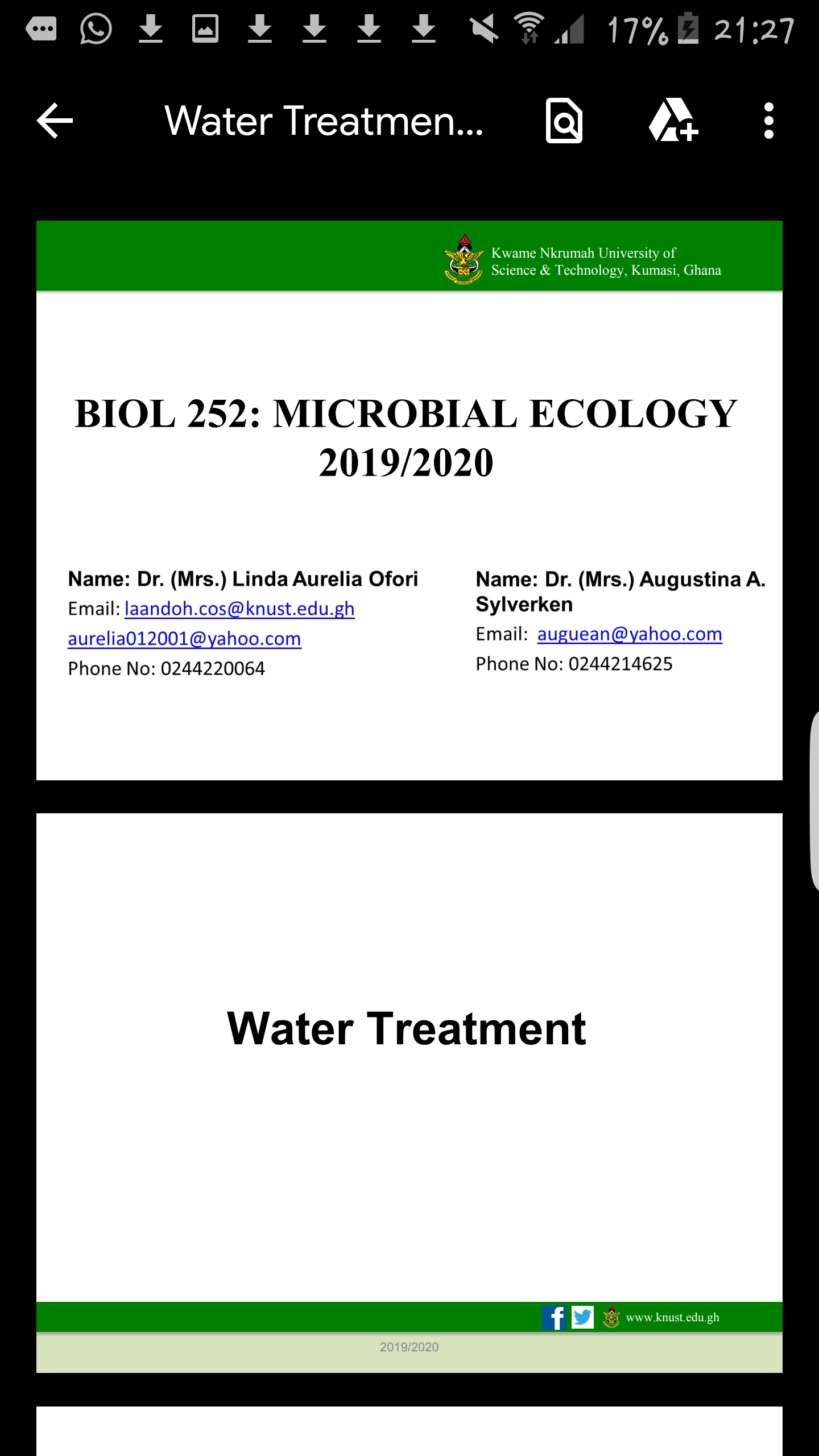Water treatment
Note Description
BIOL 252 Microbial Ecology (2, 3, 3) An introduction to the natural environments of microorganisms: the atmospheric, terrestrial and the aquatic environments with emphasis on their composition and structure, physiochemical conditions affecting microbial activities, structure for growth, energy flow, macro- and microhabitats. Microorganisms of extreme environments: low water potential, extreme temperatures, extreme pH values, extreme hydrostatic pressure and at low nutrient concentration and high UV light radiation. Biofilms. Strategies for survival: role of stationary phase, spore formation and entry into the viable but non-culturable stage. Dispersal of microorganisms and development of microbial populations: dispersal, colonisation and successions, population establishment, natural selection and adaptations. Interactions involving microorganisms: microbe-microbe, microbe-plant (metabolic associations, antagonisms, the phytosphere, rhizosphere, mycorrhiza, root nodule systems and plant pathogens), microbe-animal (symbiotic, saprophytic and pathogenic).
...
Notes information
| Seller Price | GHC 9 |
| Added | 28 May, 2023 |
| University | KNUST |
| Course | Microbial ecology |


